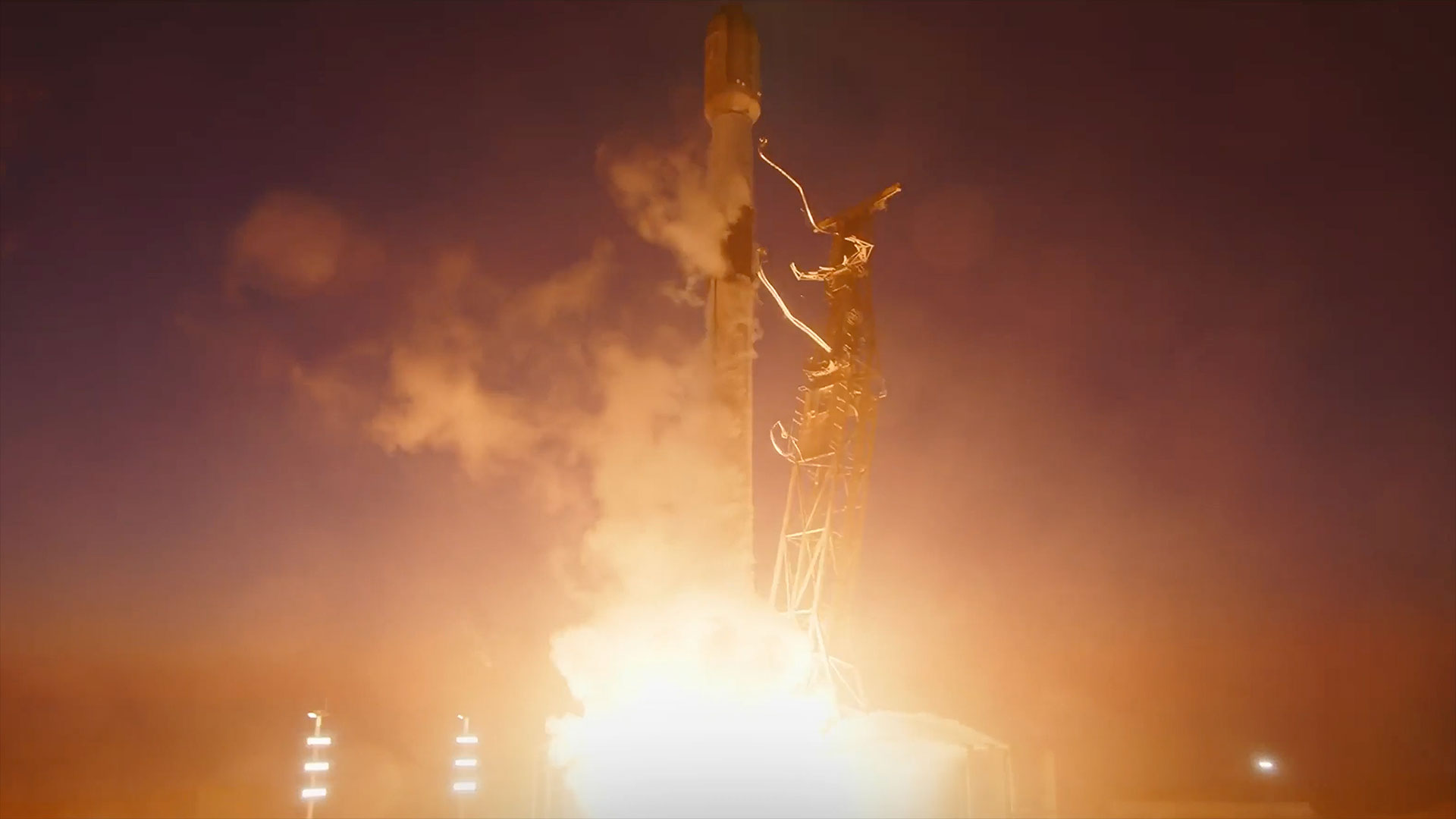SpaceX's latest Starship Super Heavy booster just breathed fire for the second time.
The Starship first-stage prototype, known as Booster 9, performed its second "static fire" test today (Aug. 25) at 1:38 p.m. EDT (1638 GMT), briefly igniting its Raptor engines while sitting atop the orbital launch mount at SpaceX's Starbase site in South Texas.
The engines burned for about six seconds, just as planned, SpaceX representatives said during a webcast of today's test.
Related: Relive SpaceX's explosive 1st Starship test in incredible launch photos

This was the second such test for Booster 9; the huge vehicle lit up 29 of its 33 Raptors during an Aug. 6 static fire. Today, all 33 ignited.
"Super Heavy Booster 9 static fire successfully lit all 33 Raptor engines, with all but two running for the full duration. Congratulations to the SpaceX team on this exciting milestone!" SpaceX said in a post on X (formerly Twitter) this afternoon.
The two static fires are part of the preparations for the second-ever test flight of a fully stacked Starship. Booster 9 will fly on that mission, along with an upper-stage prototype called Ship 25.
Get the Space.com Newsletter
Breaking space news, the latest updates on rocket launches, skywatching events and more!
The first Starship test launch, on April 20 of this year, aimed to send an upper stage partway around Earth, with splashdown targeted in the Pacific Ocean near Hawaii. But that didn't happen; the vehicle's two stages failed to separate as planned, and SpaceX sent a self-destruct command, destroying Starship high above the Gulf of Mexico.
SpaceX has made more than 1,000 design changes to Starship in the wake of that debut flight, according to company founder and CEO Elon Musk.
For example, the company has shifted to a "hot staging" strategy, meaning that Starship's upper stage will now begin firing its six Raptor engines before fully separating from the Super Heavy booster. That change required adding a venting system and a heat shield to the top of Booster 9, which SpaceX did between the first and second static fires.
The company also installed a water-deluge system beneath Starbase's orbital launch mount, in an attempt to prevent the damage to the pad caused by the April 20 liftoff.
Musk wants Booster 9 and Ship 25 to launch soon, but the timeline is not entirely up to him: The U.S. Federal Aviation Administration (FAA), which issues launch licenses, is apparently still reviewing the mishap report that SpaceX filed about the first launch.
Editor's note: This story was updated at 5:25 p.m. ET on Aug. 25 with news that all 33 of Booster 9's Raptors fired during today's test.
Join our Space Forums to keep talking space on the latest missions, night sky and more! And if you have a news tip, correction or comment, let us know at: community@space.com.

Michael Wall is a Senior Space Writer with Space.com and joined the team in 2010. He primarily covers exoplanets, spaceflight and military space, but has been known to dabble in the space art beat. His book about the search for alien life, "Out There," was published on Nov. 13, 2018. Before becoming a science writer, Michael worked as a herpetologist and wildlife biologist. He has a Ph.D. in evolutionary biology from the University of Sydney, Australia, a bachelor's degree from the University of Arizona, and a graduate certificate in science writing from the University of California, Santa Cruz. To find out what his latest project is, you can follow Michael on Twitter.
-
Unclear Engineer Thank for updating the article to tell us that all 33 engines ignited and 31 burned for the full 6 seconds.Reply
Still an issue with early shutdowns. I wonder if SpaceX will do a third static test to address the issue.
